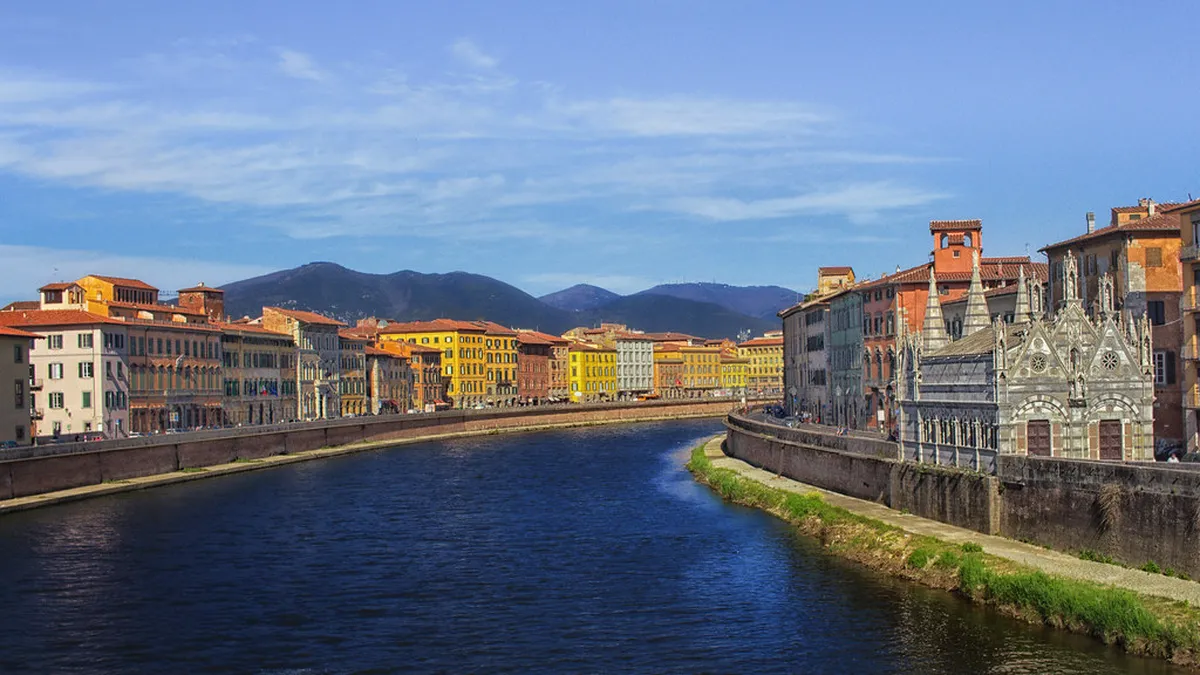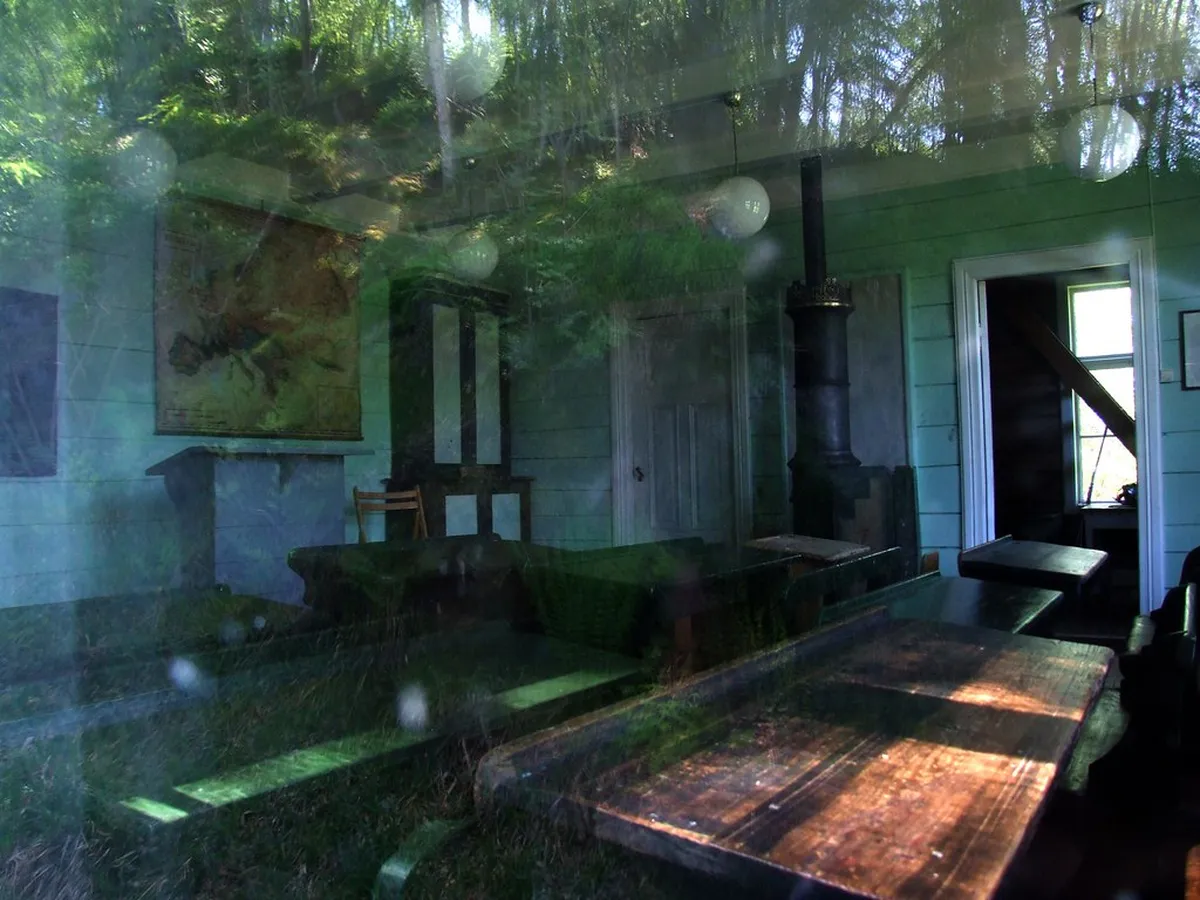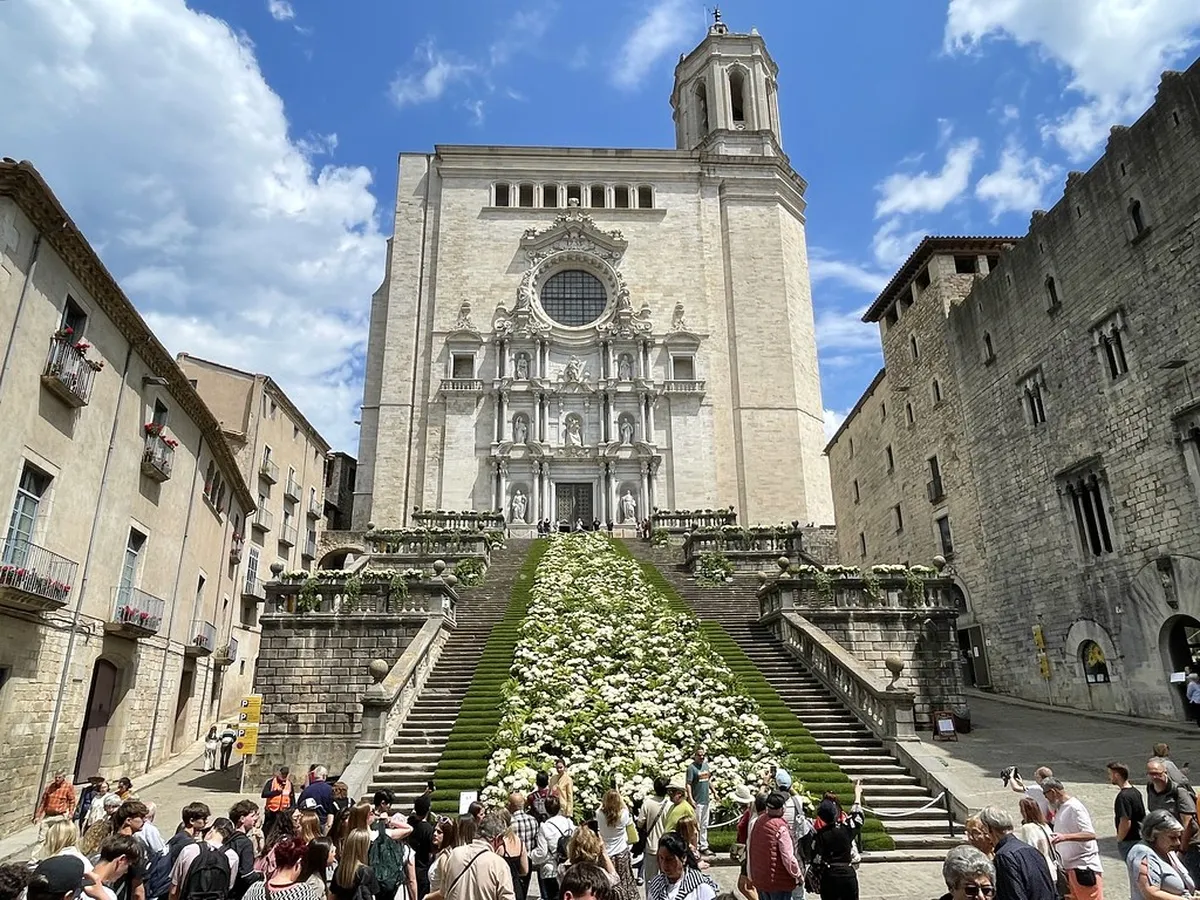Seasonal Highlights in Jeju: A Year-Round Guide to the Island's Changing Beauty
Jeju Island transforms dramatically with the changing seasons, offering visitors unique experiences throughout the year. From the vibrant pink cherry blossoms of spring to the snow-capped peak of Hallasan in winter, each season presents the island in a different light. This guide helps you discover the seasonal highlights in Jeju, allowing you to plan your visit around the natural phenomena and cultural events that most appeal to you. For a complete itinerary that can be adapted to any season, check out our 5-day Jeju itinerary. Enhance your Rome experience with our Rome itinerary.

Spring in Jeju (March-May): Blossoms and Renewal
Plan this trip faster with our free online itinerary maker. Get a personalized day-by-day plan in minutes.
Spring transforms Jeju into a paradise of blooms, mild temperatures, and renewed energy. It's widely considered one of the most beautiful times to visit the island. If you're planning a spring visit, our guide to essential Jeju travel tips can help you prepare for the season's occasional rain showers and fluctuating temperatures. Enhance your Rome experience with our Rome itinerary.
Cherry Blossom Season (Late March-Early April)
Perhaps the most anticipated natural event in Korea, cherry blossom season brings a magical atmosphere to Jeju. These delicate pink blooms create stunning photo opportunities throughout the island. For photography enthusiasts, combining cherry blossom viewing with visits to Jeju's iconic landmarks makes for unforgettable images. Don't miss our guide to top must-see attractions in Jeju to plan your spring sightseeing. Plan your journey with our Top Must-See.
- Peak Bloom: Typically last week of March through first week of April (about 7-10 days earlier than mainland Korea)
- Best Viewing Spots:
- Jeonnong-ro Street in Jeju City (1.5km cherry tree tunnel)
- Jeju National University campus
- Noksan-ro Road near Seogwipo
- Hallim Park (combining cherry blossoms with other attractions)
- Cherry Blossom Festival: Annual celebration with music, food stalls, and nighttime illuminations along Jeonnong-ro
- Photography Tips: Early morning offers the best light and fewer crowds; visit on weekdays if possible
Canola Flower Fields (March-April)
The brilliant yellow carpets of canola flowers create stunning contrast against Jeju's volcanic landscape: Enhance your Rome experience with our Rome itinerary. Enhance your Rome experience with our Rome itinerary.
- Peak Bloom: Mid-March through mid-April
- Best Viewing Spots:
- Sanbangsan Mountain area (flowers with dramatic mountain backdrop)
- Gasiri Flower Festival grounds in Pyoseon
- Fields around Seongsan Ilchulbong (Sunrise Peak)
- Jeongseok Aviation Flower Garden
- Photographer's Note: Morning light illuminates the yellow fields beautifully against Jeju's blue skies
Camellia Blooms (February-April)
While starting in winter, these vibrant red flowers continue blooming into spring: Enhance your Rome experience with our Rome itinerary. Enhance your Rome experience with our Rome itinerary.
- Peak Bloom: March for most locations
- Best Viewing Spots:
- Camellia Hill (largest camellia garden in East Asia with over 6,000 trees)
- Dongbaek-ro (Camellia Road) in Seogwipo
- Hallim Park
Spring Hiking Season
Ideal conditions make spring perfect for exploring Jeju's trails: Plan your journey with our Itinerary Maker. Enhance your Tokyo experience with our Tokyo itinerary.
- Hallasan Mountain: Comfortable hiking temperatures and good visibility in April-May
- Olle Trails: Coastal routes lined with spring wildflowers
- Oreum (Volcanic Cones): Fresh green grass creates beautiful hillsides
Additional Spring Highlights
- Gosari (Bracken) Harvest: A spring delicacy harvested from Jeju's mountainsides
- Green Tea Fields: Fresh growth at O'Sulloc and Dosun tea plantations
- Jeju Fire Festival: Traditional event celebrating spring's arrival (usually late February/early March)
Spring Travel Tip: While the cherry blossom season draws crowds, visiting just after (mid-April to May) offers pleasant weather, reduced tourist numbers, and beautiful green landscapes. Enhance your Guangzhou experience with our Guangzhou itinerary. Enhance your Tokyo experience with our Tokyo itinerary.

Summer in Jeju (June-August): Sun, Sea, and Subtropical Heat
Summer brings warm temperatures and vibrant energy to Jeju Island, making it the perfect time for beach activities and water sports. While this is peak tourist season with larger crowds, the island's numerous beaches mean you can always find a spot to enjoy the sun. For information on the best beaches for families during summer, see our guide to family-friendly activities in Jeju.
Beach Season (July-August)
Summer is when Jeju's beaches truly come alive. The water temperature reaches comfortable levels for swimming, and beach facilities operate at full capacity. From the popular Hyeopjae and Hamdeok beaches to more secluded spots, there's a coastal experience for every preference. For detailed information about Jeju's beaches and other natural attractions, check out our guide to exploring Jeju's natural beauty.
- Peak Beach Season: Mid-July through August when water temperatures are warmest
- Top Summer Beaches:
- Hyeopjae and Geumneung: White sands and clear waters on the northwest coast
- Hamdeok: Turquoise waters and excellent facilities on the north coast
- Jungmun Saekdal: Surfing and dramatic scenery on the south coast
- Woljeongri: Trendy cafés and pine trees on the northeast coast
- Water Activities: Snorkeling, surfing, SUP (stand-up paddleboarding), kayaking, and submarine tours
- Beach Festivals: Music events, sand sculpture competitions, and night beach parties
Summer Waterfalls at Their Peak
Jeju's waterfalls are particularly impressive during and after summer rains:
- Cheonjeyeon Waterfall: Three-tiered "Pond of Gods" with lush surroundings
- Cheonjiyeon Waterfall: Illuminated for evening viewing in summer
- Jeongbang Waterfall: Korea's only waterfall that plunges directly into the ocean
Hydrangea Season (June-July)
Beautiful blue, purple, and pink hydrangeas bloom across the island:
- Best Viewing Spots:
- Jeju Stone Park's hydrangea paths
- Seonimgyo Bridge area near Cheonjeyeon Falls
- Various spots along Olle Trail routes, especially Routes 7 and 8
Summer Cave Explorations
Jeju's caves offer cool refuge from summer heat:
- Manjanggul Cave: One of the world's longest lava tubes with consistent 16°C temperatures
- Ssangyong Caves: Part of Hallim Park with illuminated interiors
- Socheongul Cave: Less visited lava tube in eastern Jeju
Summer Festivals and Cultural Events
- Jeju Haenyeo Festival: Celebrating the island's female divers (usually July)
- Bonte Festival: Horseback riding demonstrations and culture (July-August)
- Jeju International Wind Ensemble Festival: Open-air musical performances (August)
Summer Travel Tip: Book accommodations 2-3 months in advance for July-August stays. Consider visiting in late June for warm temperatures with fewer crowds and lower prices.
Autumn in Jeju (September-November): Harvest Season and Fall Colors
Many consider autumn the ideal time to visit Jeju, with comfortable temperatures, reduced humidity, and stunning foliage. The island takes on golden and crimson hues as leaves change color, creating breathtaking landscapes. This season is also perfect for exploring some of Jeju's hidden gems without the summer crowds.
Hallim Park and Arboretum (Mid-October to Mid-November)
While Hallasan gets much attention for fall foliage, don't miss the more accessible autumn colors at Hallim Park and the Jeju Arboretum. These cultivated spaces offer spectacular autumn displays with a variety of tree species. Hallim Park is especially noteworthy as it combines fall foliage with other attractions like lava caves and botanical gardens. For other cultural sites worth visiting in autumn, see our guide to cultural experiences in Jeju.
Fall Foliage Season (October-November)
Jeju's autumn colors begin at Hallasan's peak and gradually descend:
- Peak Periods:
- Hallasan Mountain: Mid-October
- Mid-elevation areas: Late October
- Lower elevations and coastal areas: Early to mid-November
- Best Viewing Spots:
- Hallasan National Park (especially Seongpanak and Gwaneumsa trails)
- Sangumburi Crater rim
- Jeolmul Natural Recreation Forest
- Bijarim Forest
Silver Grass Season (October-November)
Tall pampas grass creates ethereal landscapes across Jeju:
- Peak Bloom: Late October through November
- Best Viewing Spots:
- Sangumburi Crater rim
- Saebyeol Oreum slopes
- Areas around Hallasan Mountain
- Jeju Horse Pastureland
- Photographer's Note: Late afternoon sun creates a golden glow through the silver grass

Tangerine Harvest Season (October-December)
Jeju's signature citrus fruits reach their peak in autumn:
- Hallabong Tangerines: Start appearing in late autumn
- Mandarin Orchards: Orange fruits contrast beautifully with green leaves
- Harvest Activities:
- Pick-your-own experiences at select orchards
- Fresh juice stands appear throughout the island
- Tangerine festivals in various villages
- Scenic Routes: Drive through eastern Jeju's tangerine-lined roads
Autumn Hiking and Outdoor Activities
- Best Hiking Weather: October offers ideal conditions with clear skies and comfortable temperatures
- Olle Trail Peak Season: The 26 routes around Jeju's coast are most enjoyable in autumn
- Horse Riding: Comfortable temperatures for equestrian activities
Autumn Festivals and Events
- Jeju Olle Walking Festival: Organized hikes along Olle Trails (usually November)
- Tamna Cultural Festival: Jeju's largest cultural celebration (October)
- Jeju Field Fire Festival: Agricultural celebration with fireworks (early autumn)
Autumn Travel Tip: October is widely considered the ideal month to visit Jeju, offering pleasant temperatures, minimal rainfall, and maximum visibility for enjoying the island's scenery.
Winter in Jeju (December-February): Frost, Citrus, and Quiet Exploration
Winter reveals a different side of Jeju, with fewer tourists, beautiful snow scenes on Hallasan, and the peak of citrus season. While temperatures drop, they remain milder than mainland Korea, making Jeju a popular winter escape. For accommodation recommendations during the winter season, check our guide on where to stay in Jeju.
Winter Transportation Considerations
While Jeju's main roads remain accessible year-round, some mountain areas may experience temporary closures after heavy snowfall. If you're planning to explore during winter, a rental car with appropriate tires is recommended for flexibility. Public transportation continues to operate, though service to some attractions may be reduced. For detailed information on getting around Jeju in all seasons, see our transportation guide for Jeju.
Snow on Hallasan (December-February)
Korea's highest peak transforms into a winter wonderland:
- Peak Snow Period: January is most reliable for snow scenes
- Viewing Options:
- Hiking to see snow (requires proper winter gear)
- Viewing snow-capped Hallasan from lower elevations
- 1100 Altitude Highway viewpoints
- Safety Note: Trails may close during heavy snowfall; check conditions before attempting winter hikes
Winter Camellia Blooming (December-March)
Red camellia flowers provide vibrant contrast to winter landscapes:
- Peak Bloom: January-February
- Best Viewing Spots:
- Camellia Hill (dedicated garden with winter opening hours)
- Dongbaekdongsan (natural camellia forest in eastern Jeju)
- Sinheung-ri Village known for camellias
Winter Sunrise and Sunset Spectacles
The clearest skies of the year create dramatic light shows:
- Sunrise Viewing:
- Seongsan Ilchulbong (Sunrise Peak) – most popular spot
- Woljeongri Beach on the east coast
- Seopjikoji coastal area
- Sunset Viewing:
- Suwolbong Peak on the western tip
- Hyeopjae Beach
- Sangbansan Mountain area
- New Year's Sunrise: Special events at Seongsan Ilchulbong with thousands of visitors
Winter Citrus Season
Premium citrus varieties reach their peak in winter:
- Hallabong: Jeju's famous large tangerine with distinctive protruding stem (December-March)
- Cheonhyehyang: Highly aromatic citrus variety available mid-winter
- Winter Tangerine Activities:
- Tangerine markets with samples and tasting
- Specialized citrus dessert cafés featuring seasonal treats
- Tangerine chocolate shops with winter specials

Winter-Only Experiences
- Jeju Fire Art Festival: Fire performances and light installations (December)
- Winter Birding: Migratory birds at eastern Jeju wetlands
- Hot Springs: Perfect season for enjoying Jeju's therapeutic waters
- Dramatic Wave Watching: Winter storms create spectacular coastal scenes
Winter Travel Tip: Pack layers as Jeju's winter temperatures vary dramatically with wind conditions. While temperatures rarely drop far below freezing, strong winds can make it feel much colder.
Seasonal Food Experiences
One of the joys of visiting Jeju throughout the year is experiencing the island's seasonal cuisine. Each season brings different specialties based on what's freshly harvested from the land and sea. For a more comprehensive look at Jeju's food culture, check out our guide to Jeju's culinary delights.
Planning Your Visit Around Seasonal Highlights
Tips for maximizing seasonal experiences no matter when you visit:
Seasonal Photography Guide
| Season | Prime Photography Subjects | Best Time of Day | Recommended Equipment |
|---|---|---|---|
| Spring | Cherry blossoms, canola fields, green tea plantations | Early morning for blossoms; late afternoon for canola | Wide-angle lens for flower fields; macro for blossoms |
| Summer | Beaches, waterfalls, blue hydrangeas | Golden hour for beaches; midday for underwater | Polarizing filter for reducing glare; waterproof camera for beaches |
| Autumn | Fall foliage, silver grass, tangerine orchards | Late afternoon for golden light on silver grass | Telephoto lens for compressed landscape shots |
| Winter | Snow scenes, camellia flowers, dramatic sunrises | Morning for snow scenes; golden hour for camellias | Lens hood for snow glare; fingerless gloves for cold weather shooting |
Seasonal Itinerary Adjustments
How to adapt your travel plans to each season:
Spring Adjustments
- Schedule flexible days around cherry blossom peak (can vary by 7-10 days year to year)
- Start earlier in the morning to avoid crowds at blossom-viewing spots
- Book accommodations well in advance for late March-early April
Summer Adjustments
- Plan indoor activities during midday heat
- Allow extra travel time due to increased traffic, especially to beaches
- Check typhoon forecasts during July-September and have backup indoor plans
Autumn Adjustments
- Monitor fall foliage progress through Jeju tourism websites
- Consider elevation when planning autumn hikes (higher areas change color first)
- Add tangerine-picking experiences to your itinerary
Winter Adjustments
- Start days later due to later sunrise times and colder mornings
- Check Hallasan trail conditions daily if planning winter hikes
- Allocate time for hot springs or indoor museums on particularly cold days
Seasonal Events Calendar
Major annual events by month (dates may vary slightly each year):
| Month | Major Events and Natural Phenomena |
|---|---|
| January | New Year's Sunrise Festivals, Peak Hallasan snow conditions, Winter Camellia Festival |
| February | Jeongwol Daeboreum Fire Festival, Winter camellia viewing |
| March | Canola flowers begin blooming, Early cherry blossoms, Seogwipo International Penguin Swimming Contest |
| April | Cherry Blossom Festival, Peak hiking season begins, Jeju Canola Flower Festival |
| May | Jeju International Wind Ensemble Festival, Green tea harvest season |
| June | Jeju Hydrangea Festival, Jeju Haenyeo Festival |
| July | Beach season begins, Jeju Horse Festival, Summer music festivals |
| August | Peak beach season, Seogwipo Summer Festival |
| September | Jeju Healing Festival, Early fall colors at high elevations |
| October | Tamna Cultural Festival, Hallasan fall foliage, Jeju Olle Walking Festival |
| November | Silver grass peak season, Tangerine harvest festivals |
| December | Seogwipo Chilsimni Winter Light Festival, First snow on Hallasan, Citrus festivals |
Frequently Asked Questions
When is the absolute best time to visit Jeju Island?
How accurate are the cherry blossom forecasts?
Is winter too cold to enjoy Jeju?
Which seasonal festival is most worth attending?
Can I swim in the ocean year-round in Jeju?
How does Jeju's rainy season affect travel plans?
Jeju Island's changing seasonal highlights offer visitors distinct experiences throughout the year, from spring's floral explosions to winter's tranquil snow scenes. By timing your visit to coincide with the natural phenomena and cultural events that most interest you, you can experience the island at its most magical. Whether you're drawn to cherry blossoms, summer beaches, autumn foliage, or winter sunrises, Jeju's dramatic seasonal transformations ensure that no two visits are ever quite the same. This volcanic paradise rewards repeat visitors with new discoveries in every season, each offering its own palette of colors, activities, and memories waiting to be made.
Planning your this destination itinerary?



